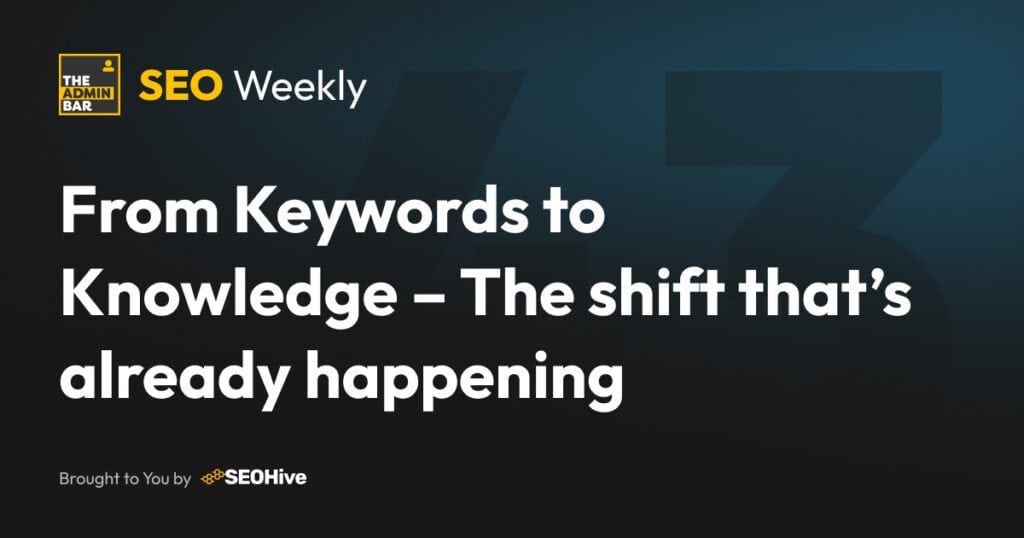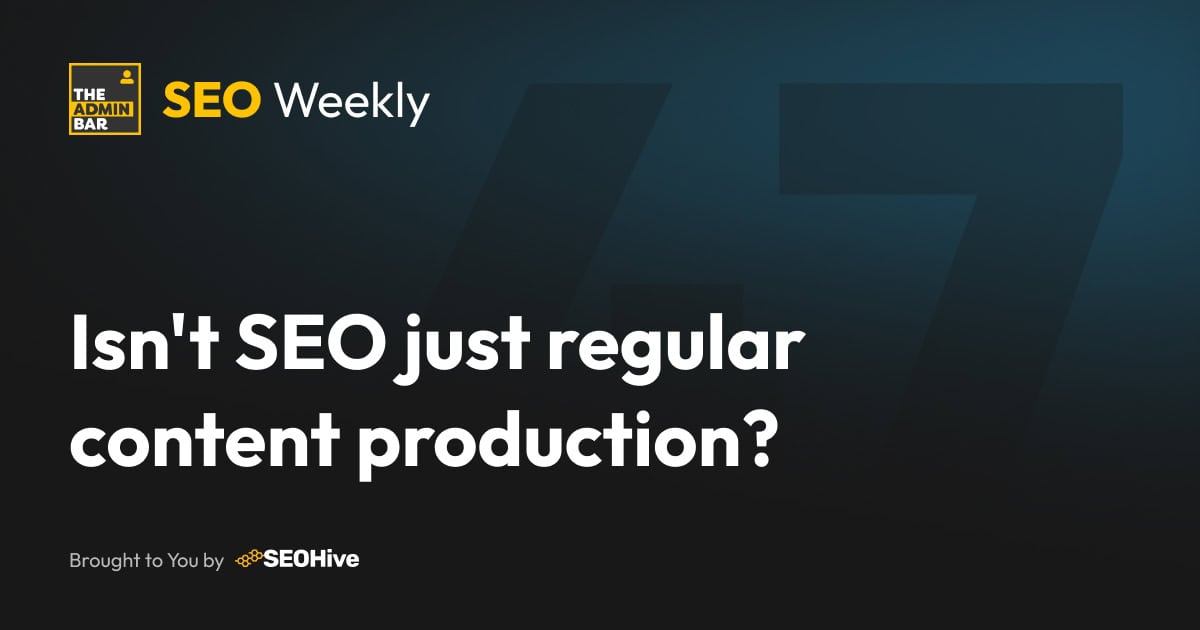For years – literally my entire career – SEO has revolved around keywords. We researched them, grouped them, tracked them, stacked them, stuffed them, unstuffed them and built content around them…
But that world is evolving – quietly, yet completely.
Search engines (and now AI systems) don’t just match words anymore. They understand things. People, places, products, ideas. In other words: entities.
And this shift from keywords to entities changes how we need to think about websites, content, and visibility in an AI-powered search world… And this is something I explored at an Agency Mavericks event in London recently.
(If you were there, it was great to meet you, but you can probably stop reading this edition here 😂)
Keywords describe – Entities define
A keyword is what someone types. An entity is what something is.
Let’s take an example:
- Keyword: “founder of I Can & I Am” Entity: “James Shone”
To a keyword-based system, that’s just a string of words. To an entity-based system, it’s a relationship: Person → worksFor → Organisation.
Search engines – and now large language models (LLMs) – process the web through these kinds of relationships. They’re not counting keywords anymore; they’re connecting meaning.
The Knowledge Graph is the new index
Google’s Knowledge Graph was the first public sign of this shift. It’s a massive database of entities and their relationships.
When you search for something, Google doesn’t just return pages – it queries that database and finds entities connected to your query.
Fast forward a few months and LLMs like ChatGPT, Perplexity, and Gemini are building their own knowledge graphs, learned directly from the structured and unstructured data they crawl.
In other words: Your website isn’t just a collection of pages anymore – it’s a network of nodes that describe what your brand knows, does, and connects to.
It’s important to note here that although traditional SEO really means “ranking in Google” and everyone else follows, there isn’t that level of uniformity with the LLMs… There are big players but at the moment the development of how these models work is independent. Everything that follows from here is what is generally understood about how they collectively work, but there will be nuances…
What this means for client websites
Most websites today are still keyword-shaped. They’re built to target “plumber near me” or “family lawyer in Chicago.”
That still matters – but it’s no longer enough.
To stay visible in AI-assisted search, sites also need to be entity-shaped:
- Every person, product, and service should be clearly identifiable.
- Internal links should express relationships between those entities.
- Schema markup should describe how those entities connect.
When you do this, you’re not just optimising for search – you’re teaching AI what your client actually does.
Please note the word “also” – this isn’t an either/or scenario… Your schema graph that powers this functionality sits in addition to your existing SEO efforts.
Websites as nodes
If you think of a website like a human body, you could consider each page as an organ – it serves a purpose, has connections, and contributes to the whole system. Links are the arteries – they pass meaning and context. Schema is the nervous system – it communicates outward to the world about how everything fits together.
If one part is missing or misfiring, the body (or website) doesn’t function optimally.
How this fits into an SEO workflow
This evolution doesn’t replace SEO – it expands it. Here’s a simple framework you can start using today:
1️⃣ Define your entities: People, places, organisations, products, and concepts. Be explicit – name them, describe them, and keep them consistent.
2️⃣ Map the relationships: Who works for whom? Which services belong to which category? What concepts underpin your expertise?
3️⃣ Build internal connections: Use internal links intentionally. Group related pages logically (the pillar + cluster model still works perfectly).
4️⃣ Add structure: Schema makes these relationships machine-readable. Keep a central reference of your entity names and identifiers.
5️⃣ Validate and refine: Tools like TextRazor or Google’s Natural Language API can show how machines interpret your content. If they miss key entities, refine your structure.
This isn’t more technical SEO – it’s smarter SEO
In the keyword world, we optimised for what people searched for. In the entity world, we optimise for what search engines understand and can connect.
When your clients’ sites become part of that web of understanding, they don’t just rank – they resonate across multiple AI systems.
Where SEO is headed next?
AI Overviews, Bing Copilot, Perplexity, ChatGPT – they’re all drawing from similar patterns (mainly evolutions of EEAT as we have previously discussed). Structured relationships are how they choose what to cite, reference, or summarise.
That means entity-rich content is:
- Easier for AI to understand
- More likely to be cited in AI responses
- More resilient to future algorithm changes
Keywords still matter – but they’re not the destination anymore. They’re the doorway to a deeper web of meaning.
The agencies that adapt to this shift – building entity-driven, relationship-rich sites, and include schema formation within their content creation workflows – will be the ones whose clients stay visible long after search evolves again.
To give some practical examples and breakdowns of how this works – I prepared a cheatsheet for the delegates, and you can grab a copy of it here:
👉 Grab the free Entity Schema Cheatsheet + Swipe File here
Join the Conversation!
There's a dedicated thread on this post inside of The Admin Bar community. Join in on the conversation, ask questions, and learn more!
Group Thread





